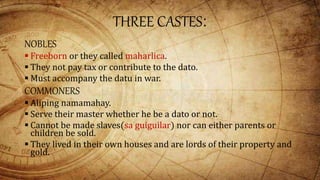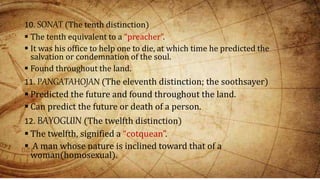Fray Juan de Placencia was a 16th century Spanish Franciscan missionary who helped establish numerous towns in the Philippines. He is known for writing the first book printed in the Philippines, the Doctrina Christiana, as well as the Customs of Tagalog, which summarized the social hierarchy, religious practices, and burial customs of the Tagalog people. It described their belief in various gods and rituals involving sacrifices to gods of nature like the moon and stars for purposes like healing and prosperous harvests. It also detailed the Tagalog views of the afterlife and different types of priests and witches they recognized.























